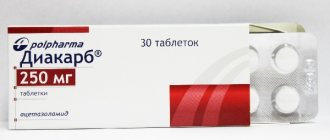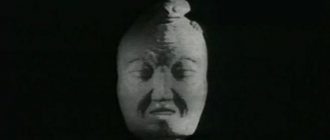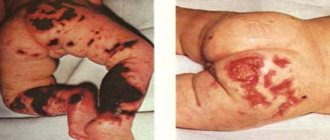Description of the disease
Paresis is a medical term for muscle weakness due to the fact that nerve impulses do not reach them.
The state of paresis differs from paralysis in that the body does not completely lose muscle functionality. In this article we will talk about hemiparesis on the left side of the body.
The disease most often occurs either in older people as a result of serious illnesses, or in young children as a result of perinatal pathologies (cerebral palsy).
Hemiparesis is a consequence of damage to neurons in the brain or spinal cord.
Left-sided hemiparesis may vary:
- By localization:
- Central;
- Peripheral.
- According to the speed of flow:
- Spicy;
- Slowly developing.
- By severity:
- Easy;
- Moderate;
- Deep.
Help: Symptoms of left-sided hemiparesis may differ, it all depends on the degree of damage to the central nervous system, the cause of the pathology, and the age of the patient. When the disease invades the brain and facial nerve, patients begin to experience problems with facial expressions.
In addition, you can identify the following symptoms:
- Increased muscle tone;
- Prolonged migraine;
- Fever;
- Lack of appetite and fatigue;
- Aching bones;
- Weight loss;
- Muscle resistance when trying to bend a limb;
- Muscles are affected unevenly;
- Strengthening tendon reflexes;
- Rossolimo reflex, Babinski reflex;
- Emotional swings, personality disorders.
Disease by severity
Doctors determine the severity of various types of paresis on a six-point scale:
- 0 points – complete absence of movement;
- 1 point – minor muscle movements are observed, the joints are not involved;
- 2 points – movement is possible, but in a vertical position, if there is no external resistance. The joints move barely noticeably;
- 3 points – muscles cope with gravity. Joint movements are constrained;
- 4 points – the patient makes movements, while losing a little strength in the muscles;
- 5 points – the patient makes movements without losing muscle strength.
Disease in children
It is generally accepted that left-sided hemiparesis in children is a type of cerebral palsy.
Most often in children, hemiparesis is externally manifested in the tone of the arm muscles, which are responsible for flexion, and vice versa, the tone in the legs is in the muscles responsible for extension.
Most often, this pathology is congenital.
Symptoms in children:
- The child stops recognizing familiar people;
- Cognitive impairment;
- Inability to control movements;
- Deterioration of sensitivity;
- Epileptic seizures;
- Headache;
- Fever;
- Loss of appetite, fatigue;
- Pain in bones and joints.
Congenital hemiparesis becomes noticeable in children by three months of life; the following initial symptoms can be identified:
- Arms and legs move asymmetrically;
- Often the hand is clenched into a fist;
- Weak support function.
Important! Basically, the final diagnosis is made by the age of one or even one and a half years, at which time children begin to walk and the symptoms become especially noticeable. Severe cases of hemiparesis also affect the child’s intellectual and psychological development.
Child development with cerebral palsy
Psycho-emotional characteristics manifest themselves in different ways: some children are irritable, excitable, and suffer from sudden changes in mood. Others are shy, fearful, and have difficulty communicating with people.
Restriction of physical activity causes curvature of the spine, contracture and internal pathologies. Due to speech impairments, meaningful communication is limited or absent. Parents should not show excessive pity and impressionability in their upbringing. It is necessary to praise the child more often, encourage him to take active actions, and form normal self-esteem; all this is very important for the normal development of the child. Parents should help the patient adapt socially.
Left-sided spastic hemiparesis
Spastic hemiparesis occurs when the head or cervical region is affected, and causes stiffness of the muscles on the opposite side of the body, in this case, the left.
Spastic hemiparesis manifests itself gradually. First, spasticity appears - tension in the limbs , which is felt as a kind of stiffness. Without treatment, this condition eventually develops into full-fledged hemiparesis.
People with spastic hemiparesis typically have characteristic external symptoms that are noticeable to others, such as the Wernicke-Mann gait.
Causes
By and large, hemiparesis is not an independent disease, but a manifestation of the pathology of the nervous system in which damage to the motor center or pathways has occurred.
The resulting muscle weakness leads to paresis.
Most often, the process occurs in one part of the brain and, interestingly, pathological external processes will be noticeable in the opposite direction.
That is, if the right hemisphere is affected, the left half of the body will be affected, either completely or partially, such as an arm or leg.
This occurs due to the fact that there is an anatomical decussation of nerve fibers that originate from the brain at the level of the transition of the medulla oblongata to the spinal cord.
In children
In childhood, the cause of hemiparesis can be:
- Birth injury;
- Intrauterine infection;
- Hypoxia, that is, oxygen starvation, during pregnancy or childbirth;
- Previous infections: polio, meningitis, tetanus, tuberculosis.
In adults
The cause of left-sided paresis in adults can be:
- Oncology of the central nervous system;
- Head injury;
- Degenerative diseases of the central nervous system, such as Parkinson's disease and Alzheimer's disease;
- Epilepsy;
- Consequence of a serious infectious disease: encephalitis, meningitis, tetanus, rabies, etc.;
- Thrombus;
- Hemorrhages in the head (stroke);
- Lumbosacral plexitis;
- Aneurysm;
- Frequent stress or severe one-time stress.
Why does hemiparesis occur?
Circulatory disorders
Strokes are characterized by acute manifestation, rapid progression of symptoms, and persistent nature of the disorders. Hemorrhagic stroke develops rapidly. At the onset, general cerebral manifestations predominate, accompanied by signs of focal lesions. Ischemic stroke is characterized by a slower increase in symptoms and a predominance of focal manifestations over cerebral ones.
When the brain is damaged in the carotid artery basin, central hemiparesis is formed with loss or decrease in muscle strength and increased muscle tone. Smoothing of the nasolabial fold, facial distortion, and lagophthalmos are revealed. Hemianopsia, apraxia, aphasia, and critical impairment are possible. With lacunar strokes, hemiparesis can be observed in isolation.
In patients with transient cerebrovascular accidents, hemiplegia and hemiparesis are rarely diagnosed, and the decrease in muscle strength is insignificant or moderate. Dysarthria and anisoreflexia may be detected. Sometimes epileptic seizures occur. All neurological functions are completely restored within 24 hours.
Tumors
Hemiparesis develops in every second patient with a brain tumor. The disorders progress gradually, appearing against the background of general cerebral symptoms (dizziness, headache, vomiting, which does not bring relief) and focal manifestations. They are detected when the motor cortex is involved, brainstem lesions and craniospinal neoplasia.
Hemiplegia or hemiparesis is determined in patients with pineoblastomas, meningiomas, astrocytomas, medulloblastomas, other primary tumors, cerebral metastases with the spread of malignant neoplasia of other organs. With predominantly unilateral localization of pathological foci, weakness of the muscles of half the body can accompany cerebral gliomatosis, carcinomatosis of the meninges. Sometimes the cause of hemiparesis is neuroleukemia.
Traumatic injuries
The phenomena of hemiparesis are found in victims with traumatic brain injuries. With a mild contusion of the brain, muscle weakness is short-term and is not always detected. For a brain contusion of moderate severity, hemiparesis persists for 1-1.5 months. In case of severe bruises, neurological symptoms partially regress, and persistent residual consequences are observed.
The cause of hemiparesis can be subarachnoid hemorrhage, intracerebral, subdural or epidural hematoma. Unilateral muscle weakness is considered one of the most persistent symptoms of hematoma; it often occurs after a clear interval and is accompanied by headache, psychomotor agitation, disturbances of consciousness, vomiting, aphasia, anisocoria, bradycardia, and increased blood pressure.
Hemiparesis
Purulent processes
Brain abscess becomes a consequence of injuries, postoperative complications, hematogenous spread of infection in inflammatory lung diseases. Otogenic intracranial complications play a significant role in the structure of pathology. The likelihood of developing hemiparesis is determined by the location and extent of the abscess. The clinical picture includes cerebral and focal manifestations. With empyema, meningeal symptoms may appear.
Neuroinfections
Hemiparesis sometimes develops with encephalitis (post-vaccination, Japanese mosquito, tick-borne, influenza) and meningoencephalitis. A high risk of this disorder is observed in vascular neuroAIDS - vasculitis of cerebral vessels, which is characterized by the transition of ischemic strokes to hemorrhagic ones. In addition, hemiparesis is detected with progressive multifocal encephalopathy, which more often develops in patients with AIDS.
Stroke-like symptoms with hemiparesis are sometimes observed in the later stages of neurosyphilis. As a rare cause of unilateral muscle weakness, one can consider syphilitic gumma, which is located predominantly in one half of the brain stem and, as it grows, compresses the pathways.
Cerebral palsy
Cerebral palsy is characterized by a variety of manifestations and significant variability in the clinical picture. Monotetra or hemiparesis are possible. Increased muscle tone and dysarthria are typical. When the muscles of the larynx and pharynx are affected, dysphagia occurs. Hyperkinesis, epilepsy, and intellectual impairment are often detected. Due to delayed development of the involved limbs, skeletal deformities form as the child grows.
Epilepsy
Todd's palsy occurs after an epileptic seizure and is manifested by central hemiparesis, less often - monoparesis of varying degrees of severity. The symptom persists for 1-2 days, then muscle strength is gradually restored. The pathological condition is more often observed after prolonged epistatus, secondary generalized seizures and paroxysms of Jacksonian epilepsy.
Kozhevnikov epilepsy is secondary in nature, developing against the background of Rasmussen encephalitis, tick-borne encephalitis, and neurosyphilis. Occurs with tumors, strokes, tuberculous meningoencephalitis, and other diseases. Along with simple partial seizures and myoclonus, it manifests itself as hemiparesis, depression, phobias, and sometimes psychopathic disorders.
Parasitoses
Aspergillosis can manifest itself with fever and general cerebral symptoms or manifestations resembling stroke. Neurological deficit is formed already in the first days after the onset of the disease, hemiparesis is complemented by dysarthria, smoothness of the nasolabial fold, and numbness of the face. With rapid progression, disturbances of consciousness are possible.
Other reasons
The symptom can be detected in the following pathologies:
- Sturge-Weber syndrome.
Congenital angiomatosis is manifested by vascular spots on the skin of the face, the formation of angiomas on the body and meninges. Due to the predominantly homolateral nature of the lesion, hemiparesis predominates among movement disorders. - Birth injuries.
The cause of the disorder is intracranial hemorrhage in the conduction pathways or motor parts of the brain due to trauma during childbirth. Muscle weakness is present from birth. - Hypertensive encephalopathy.
Mild hemiparesis is observed with pyramidal syndrome. May be accompanied by cephalalgia, dizziness, decreased cognitive abilities, and psycho-emotional disorders.
Hemiparesis is sometimes diagnosed with tetralogy of Fallot and dissecting aortic aneurysm. In the first case, muscle weakness develops after dyspnea-cyanotic attacks, in the second it is the result of cerebral ischemia due to tearing of the aortic wall, hematoma formation and compression of the arterial branches.
Diagnostics
Accurate diagnosis is carried out in a clinical setting and includes:
- Taking anamnesis and visual examination of the patient;
- CBC and biochemical blood test;
- Analysis of urine;
- ECG;
- CT or MRI of the brain, cervical spine, spinal cord;
- EEG;
- Dopplerography of cerebral vessels;
- Electroencephalography;
- CSF analysis;
- Cerebrospinal fluid analysis;
- The muscle strength of both sides of the body is compared;
- Muscle resistance test;
- Barre test - holding hands in weight;
- For children, in addition to early examination by a neurologist, ultrasound of the brain is used.
Treatment
Since left-sided hemiparesis is a consequence of the underlying disease, then, first of all, it is necessary to treat it. But at the same time, it is equally important to devote time to symptomatic therapy against hemiparesis.
In children
Mainly, in the treatment of children, emphasis is placed on:
- Classes with a speech therapist for the treatment of speech dysfunction ;
- Classes with a defectologist for developmental delays;
- Treatment of episyndrome;
- Drug therapy.
In addition to this, it can help a lot:
- Gymnastics;
- Therapeutic baths and mud;
- The use of orthopedic cribs, orthopedic shoes (website of children's orthopedic shoes);
- Surgical intervention, if necessary;
- Holidays at resorts.
In adults
To treat hemiparesis, drug treatment is used primarily to improve neuromuscular conduction. Muscle relaxants to relieve tone, medications to improve blood circulation, anticonvulsants.
In addition, adults can also be prescribed:
- Orthopedic treatment: shoes, splints;
- Physical therapy and gymnastics;
- Massage.
Water procedures:
- cold and hot shower;
- water gymnastics.
Exercise therapy and a set of exercises
A therapeutic set of exercises shows good results in the treatment of left-sided hemiparesis. You can practice both in specialized centers and at home. The main thing is that the classes are constant, or better yet, daily .
Exercise sets are usually developed individually for each patient . You can give an example of such a system of exercises as:
- Pulling the chin to the chest;
- Tilt of head to shoulders;
- Rotational movements of the hands;
- Raising your arms to shoulder level;
- Rotational movements of the feet;
- Raising on toes;
- Flexion and extension of the legs in a lying position;
- Raising your legs while lying down.
We invite you to visually familiarize yourself with an interesting video on the topic:
After a stroke
If after a stroke the entire right side is completely paralyzed, this indicates that a large part of the left hemisphere was affected. Such a stroke has a pronounced clinical picture.
Firstly, these are speech and language deviations. This sign is the first and strongest indicator of a stroke. The patient has slurred pronunciation of words, impaired articulation, and the patient ceases to understand the speech of other people.
Secondly, the patient experiences a loss of speech and verbal memory, he has difficulty writing and reading, and forgets the necessary words and speech patterns.
Thirdly, a clear sign is paralysis of the right side of the body: face, arms, legs.
Fourthly, the patient experiences involuntary and reflex movements of the paralyzed limbs.
Prognosis for adults and children
The prognosis for left-sided hemiparesis depends on many factors: the patient’s age, his medical history, how quickly treatment and recovery began. But, most often, with acquired hemiparesis, the prognosis is favorable, and most patients can restore all muscle functions .
Information: In cases of congenital hemiparesis in a child, doctors usually give cautious prognoses. Because mild forms of left-sided hemiparesis respond well to treatment, while severe forms can only be partially corrected.










